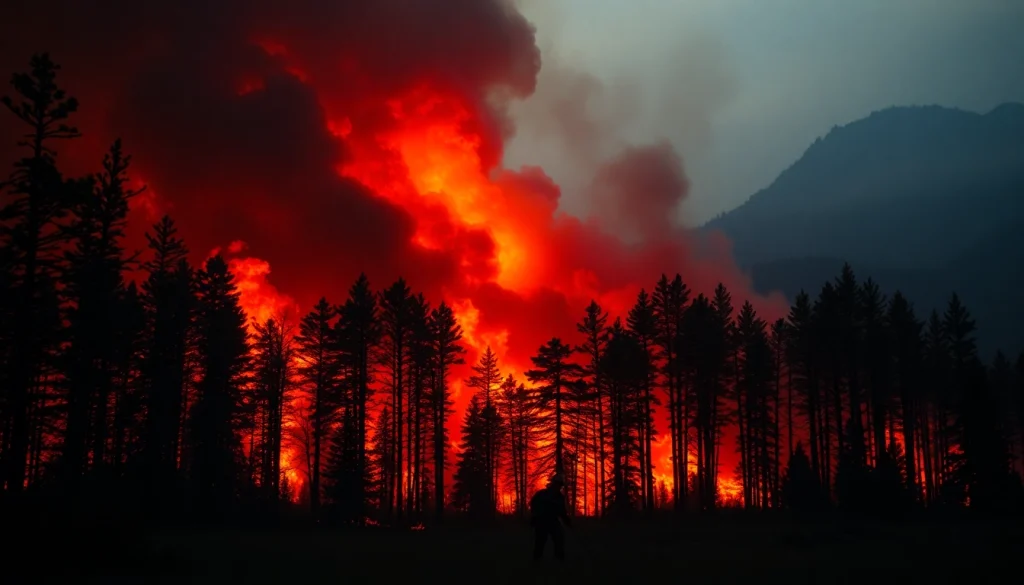Understanding Wildfire Events
Wildfire events pose a significant threat to ecosystems, economies, and even human lives. As climate change aggravates these occurrences, the need for understanding their nature, causes, and solutions becomes more pressing. In this comprehensive look at wildfire events, we will delve into various aspects including their types, recent trends, preparedness strategies, management during the events, and the processes involved in recovery after the flames have settled.
What are Wildfire Events?
Wildfire events refer to uncontrolled fires that spread rapidly through vegetation and forested areas, fueled by natural conditions and sometimes human activity. These fires can be ignited by natural causes such as lightning strikes or human actions including campfires, discarded cigarettes, and arson. The impact of these events can range from devastating loss of wildlife habitat and property destruction to triggering air quality issues and soil erosion.
Types of Wildfire Events
Wildfire events can be classified into several types, each defined by how they spread, their energy intensity, and their behavior. The three main categories include:
- Surface Fires: These are the most common type of wildfires, burning along the forest floor. They typically occur in underbrush and grasses and usually burn at a lower intensity.
- Crown Fires: These fires spread through the tops of trees, often resulting from prior surface fires. They tend to be more intense and can travel rapidly, creating a significant threat to larger areas.
- Ground Fires: These fires burn below the surface in organic soil, commonly referred to as duff. They are harder to detect and can smolder for extended periods, reigniting surface fires even after the above-ground fire appears to be extinguished.
The Causes and Conditions Leading to Wildfires
Multiple factors contribute to wildfire events, often combining to create a perfect storm for fires to ignite and spread:
- Weather Conditions: High temperatures, low humidity, and windy conditions are key contributors to the ignition and rapid spread of wildfires.
- Vegetation: Certain types of vegetation can exacerbate fire danger due to their flammable properties. Areas where dry brush or forest litter is prevalent are particularly susceptible.
- Human Activity: Negligence, such as leaving campfires unattended or improper disposal of smoking materials, accounts for a significant percentage of wildfire ignitions.
Recent Trends in Wildfire Events
Statistical Overview of Wildfire Events
Recent years have shown a marked increase in the frequency of wildfire events across the globe. According to the National Interagency Fire Center, wildfires burned approximately 10 million acres in the United States in 2020 alone. Continued research indicates that the intensity and scale of wildfires are also increasing, making it imperative to examine historical data to understand trends and patterns.
Climate Change and the Increase in Wildfire Events
The link between climate change and wildfire frequency is increasingly evident. Rising temperatures contribute to prolonged droughts, making regions more susceptible to fires. Additionally, warmer winters can lead to an earlier melting of snow, resulting in dry land during the peak fire season. Studies show that areas experiencing arid conditions are seeing an uptick in both the number and severity of wildfires.
Geographical Hotspots for Wildfire Events
Wildfire events are most prevalent in certain geographical regions, significantly impacting their ecosystems and human populations:
- Western United States: Areas like California and Oregon frequently experience severe wildfire seasons, exacerbated by dry climate and dense vegetation.
- Australia: Known for bushfires, Australia faces intense wildfire seasons that can devastate wildlife and lead to significant air quality deterioration.
- Southern Europe: Countries like Greece and Portugal have been impacted by summer wildfires that threaten urban areas and rural communities.
Emergency Preparedness for Wildfire Events
How to Create a Wildfire Emergency Plan
Creating a comprehensive wildfire emergency plan is essential for mitigating risks:
- Identify local hazards and risks related to wildfires.
- Establish an evacuation route and communicate it clearly to all family and community members.
- Create a communication plan to update families and contacts during wildfire events.
Necessary Equipment and Supplies for Wildfire Events
Having the right supplies on hand can significantly improve outcomes during wildfire emergencies:
- Fire Extinguishers: Ensure they are easily accessible and functioning.
- PPE Gear: Equip yourself with masks, gloves, and goggles to protect against smoke inhalation and debris.
- Emergency Kits: Include necessary medications, water, non-perishable food, and first aid supplies.
Community Involvement in Wildfire Preparedness
Community participation is key in wildfire preparedness. Engaging community members in educational initiatives and drills builds awareness and proactive measures. Neighborhood watch programs can also mitigate risks by monitoring suspicious activities that may lead to fires.
Management Strategies During Wildfire Events
Effective Firefighting Techniques
Firefighting techniques must adapt to the type and scale of wildfires:
- Direct Attack: Involves firefighting personnel applying suppression methods directly on flames.
- Indirect Attack: Firefighters create firebreaks or use controlled burns to starve the wildfire of fuel.
- Aerial Support: Utilizing helicopters and planes equipped to drop water and retardants aids in controlling large fires from above.
Role of Technology in Managing Wildfire Events
Advancements in technology have revolutionized how wildfire management occurs:
- Satellite Imaging: Provides real-time data on fire spread and locations, aiding in resource allocation.
- Drones: Used for surveillance and assessing damage without risking firefighter safety.
- Predictive Modeling: Software algorithms help forecast fire behavior based on weather patterns and vegetation types.
The Importance of Evacuations
Evacuations can mean the difference between life and death during wildfire events. Clear evacuation routes, timely alerts, and adherence to local emergency services guidelines are crucial for ensuring the safety of residents in fire-prone areas.
Post-Wildfire Recovery and Restoration
Assessing Damage After Wildfire Events
Post-event assessments focus on evaluating damage to structures and ecosystems. Essential steps include:
- Conducting structural assessments of residences and community buildings.
- Evaluating environmental impacts, including soil stability and water quality.
- Documenting damages for insurance purposes and future mitigation funding.
Restoration Strategies for Affected Areas
Restoration efforts must be swift and multifaceted. Strategies should include:
- Reforestation: Planting trees to restore lost habitats.
- Erosion Control: Employing techniques such as silt fencing and planting ground cover to prevent soil erosion.
- Community Planning: Collaborating with local stakeholders to rebuild structures in ways that reduce vulnerability to future wildfires.
Community Support Programs Following Wildfire Events
Creating community support programs can enhance recovery efforts. Establishing fundraisers, providing counseling services, and organizing volunteer rebuilding efforts fosters resilience in affected communities.





